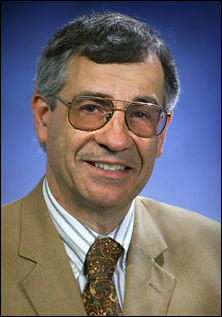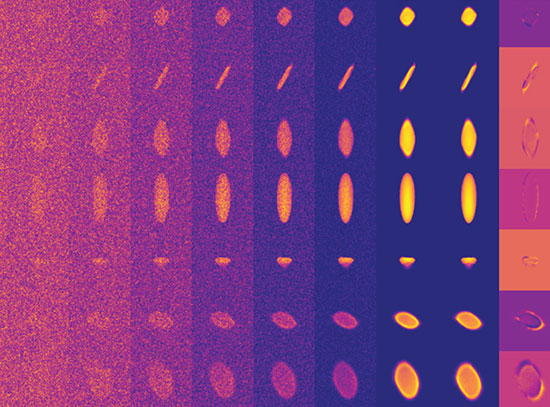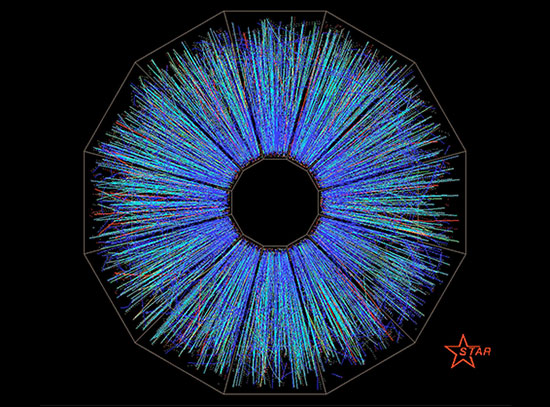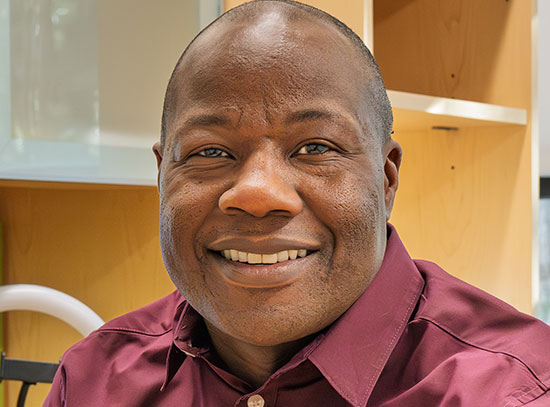Steven Vigdor Named Brookhaven Lab's Associate Laboratory Director for Nuclear and Particle Physics
August 30, 2007
UPTON,NY—Steven Vigdor, a physics professor at Indiana University, has been named the Associate Laboratory Director for Nuclear and Particle Physics at the U.S. Department of Energy's (DOE) Brookhaven National Laboratory, effective September 1.
In his new position, Vigdor is responsible for overseeing a $180-million annual budget and about 600 employees. The directorate includes Brookhaven's Collider-Accelerator Department, the Physics Department, the Instrumentation Division, and the Superconducting Magnet Division.
"This is an exciting time for physics, and Brookhaven Lab has maintained its forefront position in the physics community," said Vigdor. "The discovery of a 'perfect' liquid - a liquid with virtually no viscosity - at the Lab's Relativistic Heavy Ion Collider [RHIC] has opened up a new field of nuclear physics that has profound possibilities. Also, major advances in particle physics have brought the field to the threshold of a new golden era. I anticipate that Brookhaven Lab will continue to have a strong role in both of these areas of physics."
About 1,000 physicists from around the world perform research at RHIC, the Laboratory's largest accelerator, which is used for both heavy ion and spin physics programs. Planned future upgrades to RHIC would open up new areas of exploration about the fundamental nature of matter in terms of its most basic constituents, quarks and gluons.
Brookhaven physicists are involved in several other major physics projects around the world. For example, they have played a major part in building the ATLAS detector for the Large Hadron Collider at CERN, the world's largest physics laboratory, near Geneva, Switzerland. Brookhaven is the headquarters for the 33 U.S. institutions contributing to the ATLAS project.
Brookhaven scientists also have a long and distinguished history of research on neutrinos, elusive particles that are produced in nuclear reactions, such as those that power the sun. In fact, Brookhaven scientist Raymond Davis Jr. won the 2002 Nobel Prize in Physics for being the first scientist to detect solar neutrinos in research that spanned from 1967-1985 at the Homestake Mine in South Dakota. Brookhaven researchers plan to continue their studies of neutrinos at the Daya Bay reactor in China and in a possible new experiment to be mounted in the Deep Underground Science and Engineering Laboratory at the Homestake Mine. Expected to be completed in 2011, the newly renovated laboratory will be some 8,000 feet underground. It will be the site of experiments in nuclear and particle physics, as well as other fields.
Steven Vigdor received his B.S. from City College of New York and his Ph.D. from the University of Wisconsin-Madison, earning both degrees in physics. He has 34 years of experience in experimental nuclear physics, conducting research at several DOE national laboratories, including Los Alamos, Argonne, and Lawrence Berkeley. He also worked at Brookhaven Lab's STAR experiment. STAR, which stands for Solenoidal Tracker at RHIC, is one of four detectors at the Laboratory's collider that tracks and analyzes thousands of particles that may be produced in each heavy-ion collision. Also, Vigdor served as deputy spokesperson for the 500-member STAR collaboration from 2002-2005. He was the principal author of STAR's white paper, the extensive report on the first three years of RHIC's heavy-ion research results, which lays out the discovery of the "perfect" liquid.
A physics professor at Indiana University for 31 years, Vigdor has served as chair of the university's Physics Department from 2000-2001. Most recently, he has served as interim director of the Indiana University Cyclotron Facility.
From 1979 to the present, Vigdor has acted as a consultant or served as a member on all six of the Nuclear Science Advisory Committee Long Range Plan Working Groups - meetings established by DOE and the National Science Foundation in which leading physicists help determine the future course of physics research in the U.S. He has been a member of numerous national advisory and review committees in nuclear science, including the nuclear physics panel for the National Academy of Sciences Physics Surveys, the Nuclear Science Advisory Committee, and the Tribble Panel on Implementation of the Long Range Plan. He has co-authored 130 published research papers and has presented more than 60 talks at national and international conferences and workshops. Vigdor is a Fellow of the American Physical Society (APS) and has served on the APS Division of Nuclear Physics Executive Committee.
2007-10682 | INT/EXT | Newsroom










